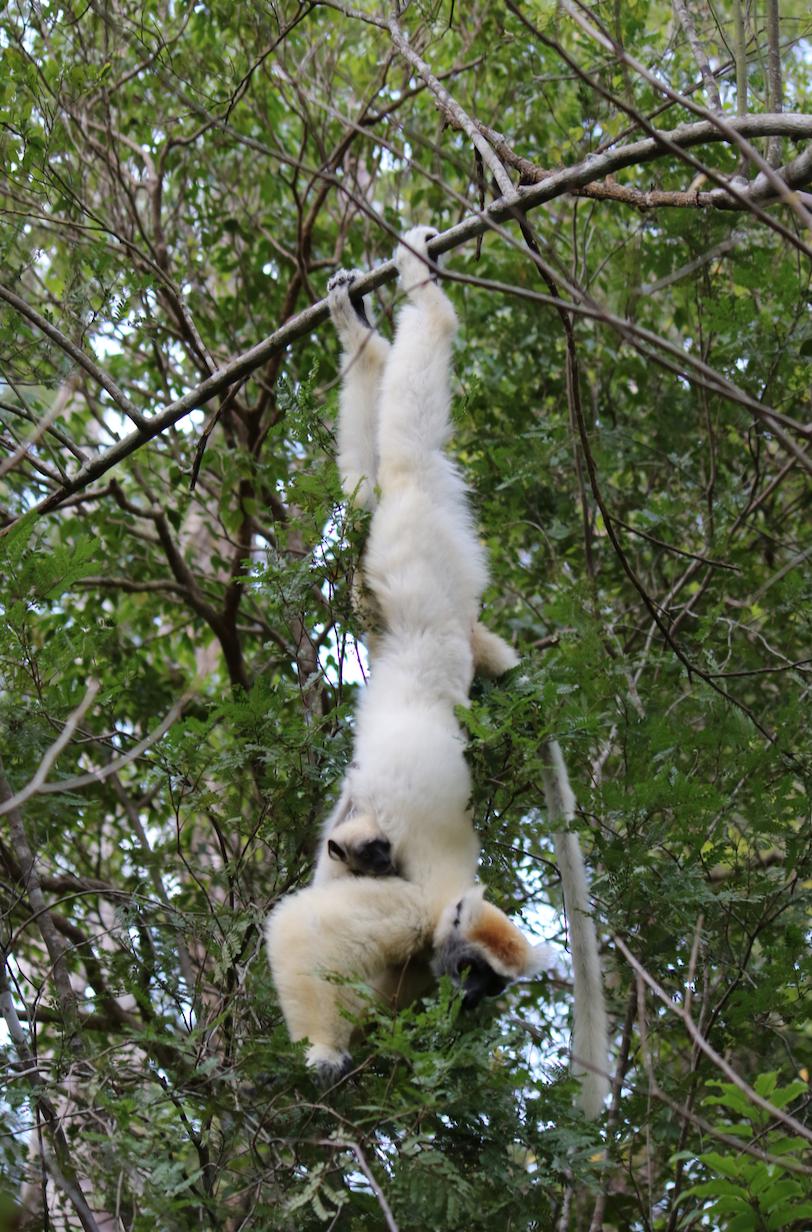Meredith Semel
Other projects
4 Sep 2017
A Division of the Crown: Using Novel Tracking Collars to Examine Behavioural and Physiological Responses to Fragmentation in Crowned Lemurs (Eulemur coronatus)
24 Oct 2018
A Division of the Crown: Using Novel Tracking Collars to Examine Behavioural and Physiological Responses to Fragmentation in Golden-Crowned Sifakas I
2 Mar 2021
A Division of the Crown: Using Novel Tracking Collars to Examine Behavioural and Physiological Responses to Fragmentation in Golden-Crowned Sifaka III
The golden-crowned sifaka (Propithecus tattersalli) is a poorly understood and critically endangered lemur species endemic to the Daraina region of northern Madagascar. This project is investigating the (1) social cohesion, (2) stress physiology, and (3) habitat requirements of this species across their entire range. I am conducting these studies by using novel tracking technology and endocrinology techniques to monitor group movements and stress hormone levels. In collaboration with several Malagasy organizations, I will inform and engage local communities, and apply the essential information collected in the project to the development of conservation strategies to conserve golden-crowned sifakas and their habitat. I am also collaborating with the local NGO Fanamby, local community members/students, and the Daraina guide association to improve science education in the region and provide training exercises for all guides.

Golden-crowned sifakas. © M Semel.
Golden-crowned sifaka are critically endangered lemur’s endemic to the Daraina region of northeastern Madagascar. The 2,000km2 region encompasses a unique biogeographical transition zone from Madagascar’s northern and western dry deciduous forests to southern humid forests. Currently, information regarding the ecological role and habitat needs of the golden-crowned sifaka is greatly lacking. My project will address the knowledge gap concerning golden-crowned sifaka habitat structure, resources within their various habitat types, and how anthropogenic disturbances impact their behavior and health. The ultimate goal of this research is to collaborate with Malagasy NGOs, local members of the Daraina community, primary and secondary schools in Daraina, and students at the University of Antananarivo to conduct an assessment of behaviour, physiology, and habitat structure of golden-crowned sifakas. This will be used to aid in the establishment of a replicable, long-term monitoring and conservation program in the Loky-Manambato protected area.
Three specific objectives will be used to achieve this goal, while providing information that is currently lacking for the critically endangered golden-crowned sifaka.
1) Use novel tracking technology to determine if golden-crowned sifakas shift their social and spatial behaviour in fragmented habitats.
2) Identify whether social grouping patterns and habitat type influence faecal glucocorticoid metabolites (stress levels) in golden-crowned sifakas.
3) Determine habitat structure, food availability, and model land cover of golden-crowned sifaka territories in the Daraina region.
Connecting golden-crowned sifaka spatial behaviour to their physiological responses can help us understand the impacts of land management practices. Through understanding their stress responses, we can determine the degree of fragmentation golden-crowned sifakas can handle before declines in their physiological health occur. Knowledge of this threshold will allow us to focus restoration efforts and forest protection in appropriate habitat types and locations. This field season will be conducted in northern Madagascar’s rainy season, which will allow us to gain an understanding of lemur behaviour and physiology during this critical time of year.
In addition to the research focus of this project, we will work with local guides, Fanamby staff, and local community members to reforest altered landscapes, develop movement corridors between fragments, and train guides to patrol the forests and identify illegal activities. We will also with students and adults in the Daraina community to improve environmental education in the region and facilitate guide training programs. Part of these community initiatives involves building an outreach structure in Daraina which will function as a space for educational activities and guide trainings to occur, both of which will enhance conservation management in the region.